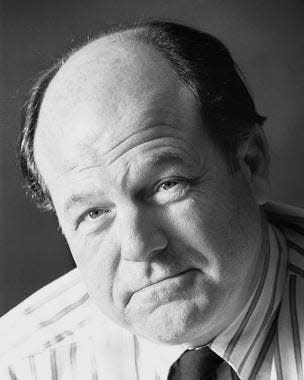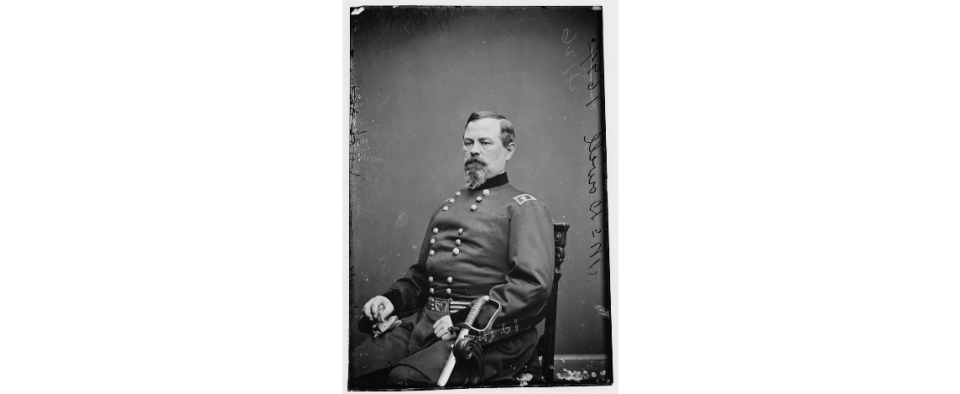McDowell family has rich history in Columbus — one was a Civil War general
- Oops!Something went wrong.Please try again later.
- Oops!Something went wrong.Please try again later.
- Oops!Something went wrong.Please try again later.

The street begins across the way from the Gravity complex on West Broad Street in the old Franklinton neighborhood on the near west side of Downtown Columbus. It is called McDowell Street and heads straight south until it meets the Scioto River. It is one of the longest streets in Franklinton – the original village founded here in 1797 – 15 years before Columbus across the river.
Its length reflects the importance of its name. There have been several McDowells living in Columbus and central Ohio over the past two centuries since the end of the American Revolution. Many of them have vanished into the unremarked past; some are well worth remembering.
There was Col. John Adair McDowell, who rode with William Henry Harrison to the river Thames in Canada in 1813, defeated the British, their Native allies and the charismatic Tecumseh. And there was Abram Irvin McDowell who marched with Col. John Campbell in 1813 from Fort Greenville in the dead of winter to burn Native American villages in central Indiana. The 300 returning men suffered almost terminal frostbite on the march back home.
And then there was Abram’s son, who was given his father’s middle name of Irvin and who became one of the best remembered McDowells of Columbus.
Irvin McDowell was born in 1818. By 1823, Abram McDowell had moved across the river to the new state capital of Columbus and built a substantial two-story house facing west at the northeast corner of Spring and Front streets. It was here that Abram and his wife raised a large family while he made his living as a court clerk, county recorder and occasional business associate of William Neil, the Stagecoach King.
In 1829, the town gave him a license to build a bath house next to his home. It is not clear who exactly came to bathe. In 1842, Abram served as the 15th mayor of Columbus. It was a good life in a good place for the McDowells.

It was in this place that Irvin McDowell grew up in the company of family and friends and received a basic education in the private schools of the period. By his late teens, his family felt he needed more education than central Ohio could provide, and he was sent to the Troyes college in France. From there, at age 18, he was admitted to the United States Military Academy at West Point. He graduated as a second lieutenant in 1838. One of his classmates was P.G.T. Beauregard – whom he would meet one day under less friendly conditions.
Assigned initially to the U.S. 1st Artillery, McDowell became a tactics instructor at West Point. In time he became an adjutant to Gen. John Wool and served under Wool in the Mexican War. After the war, he served in a number of administrative posts and rose to the rank of major by 1856. Becoming an expert on logistics and supply, he served as a staff officer and became well-acquainted with commanding Gen. Winfield Scott. He also found a mentor by 1861 in former Ohio Governor and Secretary of the Treasury Salmon P. Chase.
With the outbreak of the Civil War in 1861, the aging and infirm Scott knew he needed a younger successor to lead President Abraham Lincoln’s volunteer army. With the lobbying assistance of Chase, McDowell was promoted several grades past his peers to the rank of brigadier general.
Soon McDowell came under intense arguments to march the army south, take the rebel capital of Richmond and end the conflict quickly. McDowell was hesitant. The old drill instructor knew that his untrained, ill-equipped and untested army was fragile at best.
Yielding to pressure, he developed a complicated battle plan based on keeping a large Confederate force under Gen. Joseph Johnston busy in the Shenandoah Valley while McDowell defeated another Confederate force at nearby Manassas commanded by Beauregard.
On July 21, 1861, McDowell’s Union Army met Beauregard’s Confederate Army and the two forces battled fiercely on a hot summer’s day. For a time, it seemed the Union might prevail but at a critical moment the tide of battle turned. Johnston’s army had eluded its Union opponents and traveled by train to join the fight. The new reinforcements dismayed the Union attackers who withdrew in a confusion that turned into a rout. The result was a resounding Union defeat.
A few days later, McDowell was removed from command and given a division under a new leader named George McClellan. Over the rest of the war and after, McDowell served in a variety of commands, ultimately serving as commander of the Department of the Pacific in the peacetime army of the 1880s in San Francisco.
In that role, with his wife and family, and as an avid gardener, he directed the design and construction of a landscaped military facility at the Presidio in that city. Retiring in 1882, he continued his work on the Presidio until his death in 1885.
Irvin McDowell is buried in the Presidio cemetery in San Francisco.
Local historian and author Ed Lentz writes the As It Were column for ThisWeek Community News and The Dispatch.
This article originally appeared on The Columbus Dispatch: McDowell family has storied history in Columbus, Franklinton

